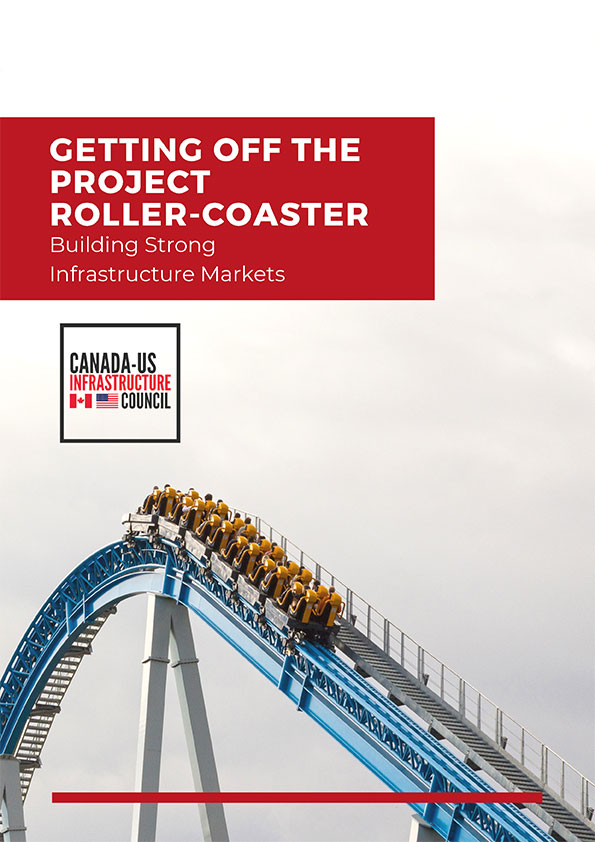Getting Off the Project Roller-Coaster
Published in 2019
IMAGE CREDIT: WorldofDominic / Shutterstock.com
For this report, group members worked to determine how governments determined how and where to spend infrastructure dollars and develop transparent project pipelines developed by a combination of evidence and expertise to help reduce the risk of projects being cancelled. This gives companies confidence to invest in skills and new equipment and saves public money. As part of CUSIC’s research efforts, this report explores the approach international jurisdictions at the national and state and provincial levels take to establish project pipelines, with the goal of identifying best practices and replicating the model in Canada and the US.
Towards Greater Certainty
Major infrastructure projects are delivered over many years and require major investments in skills and equipment from companies in the sector. Political and infrastructure timelines often do not work well together and have led to many cancelled and severely delayed projects over the years. With project funding rising and falling often around political cycles it becomes a roller coaster, making it difficult to plan long-term and invest in the skills and technology needed to drive productivity improvements in the sector.
A clear, evidence-based approach to prioritizing infrastructure ensures that the risk around projects being cancelled or delayed is significantly reduced. As this report shows, these practices are becoming more common in North America.
Key Principles for Infrastructure Investment
- Focused: Investment is based on clear objectives and goals that ensure that investments deliver benefits for the people using the infrastructure.
- Transparent: Sharing information openly and laying out why a project is a priority promotes better decision-making and helps industry plan.
- Independent and evidence-based: Develop plans and priorities around independent, evidence-based advice makes a strong case for the infrastructure need
- Clear process: There must be a clearly defined process for identifying and evaluating priorities, with opportunities to provide input and allowing for political scrutiny builds consensus on projects.
- Stability and certainty: Long-term, multi-year planning and funding underpins a strong infrastructure market and provides confidence throughout the infrastructure supply chain.
Members


